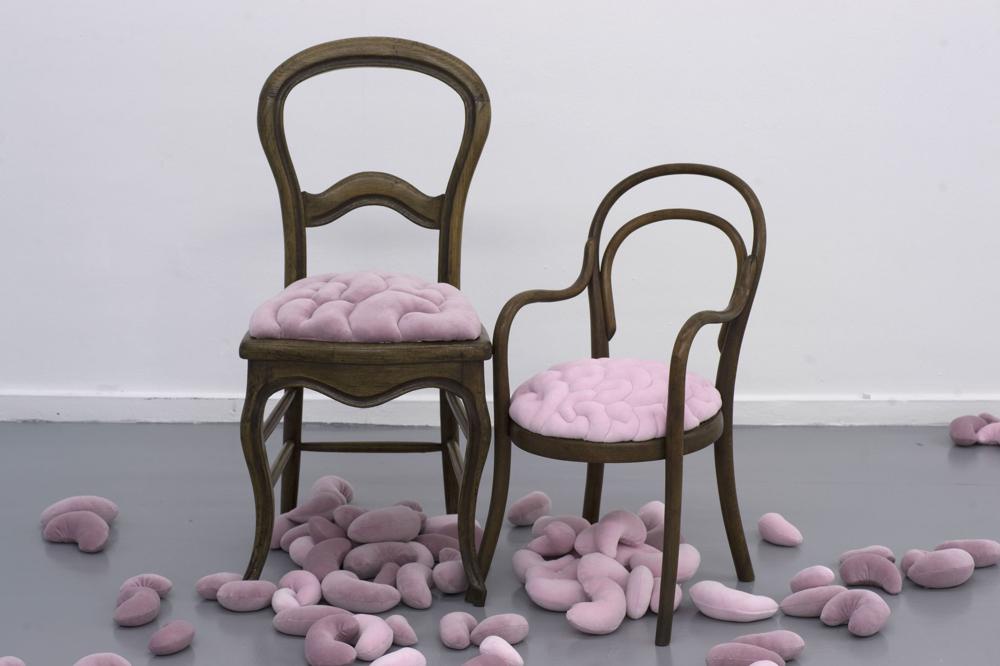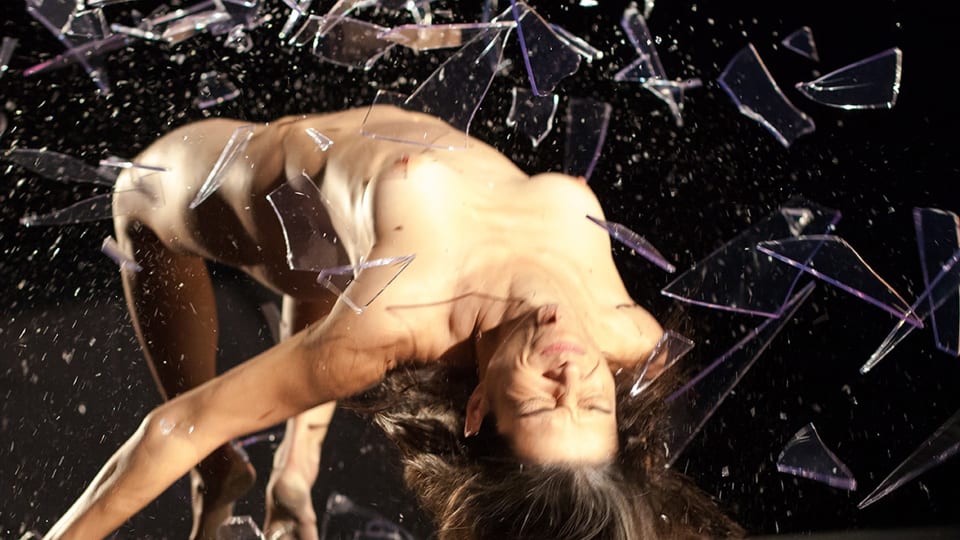
FIREFLIES
2 March - 7 April 2012
Aeroplastics @ Rue Blanche, Brussels
group show with works by ELODIE ANTOINE, AMANDA BESL, HEHE, IIDIKO HETESI, FRANCES GOODMAN, MINGJUN LUO, KARINE MARENNE, SYLVIE RONFLETTE, TRACEY SNELLING, ANTONIA WRIGHT
Sylvie Ronflette gave the title “Le Jardin” to the dossier tracing her artistic journey from 1995 to 2010: a title that extends that of this exhibition, placed firmly under the sign of the firefly. These works in synthetic plaster, and within which metal and polyester are sometimes inserted, mid-way between the vegetal and the organic, possess an unsettling sensuality, inevitably calling out to the sense of touch. She shares this trait with Elodie Antoine, whose rounded sculptures - covered in fabric and inspired by mushrooms - proliferate in space. In another series, the artist envisages a natural world of a notably less untamed variety: her “embroideries” of black thread design/define chain-link fences, factory chimneys, cooling towers – spaces, fenced-in/fenced-off by Man. At times, Nature revolts, and attacks the human forces attempting to control and domesticate it. And it is this terrible reality that is addressed by Helen Evans and Heiko Hansen (HeHe), who have for several years been studying - from an artistic, playful and retro-technological angle - the impact of industrialized society on our environment. Their installation, Fleur de Lys, that evokes the explosion of the Fukushima nuclear plant (or any other similar facility that might blow-up in the future), connects with Antonia Wright’s reflections in her video Deep Water Horizon. The title refers directly to the immense oil slick provoked in 2010 by the eponymous oil platform run by BP in the Gulf of Mexico. At the start, it was the war in Iraq that drove the artist to create performances where she rolls herself in and amidst the most sordid spots in New York, the city where she lives: “I roll and feel all the apathy of the world.” The present video was shot in Miami, at 2 o’clock in the morning, and just a stone’s throw from the bling-bling nightclub district.
Those times of family picnics where, at nightfall, fireflies levitate and teem at the water’s edge - are these days now well over? Karine Marenne plays with her transgenre luncheons on red-check tablecloths that shatter the social codes linked to our usual vision of the family and the couple. But whether they are tenderly entwining or experimenting with SM using kitchen utensils, her protagonists nurture close mutual relationships (even with themselves). With Frances Goodman, it has to do with violent rupture: her bonnets of sports cars are disfigured by vengeful messages imbedded with a rivet gun. Initial thoughts naturally go to the revenge taken by a wronged woman, expressing her anger using a tool with particularly masculine connotations. But is this not a bit too reductive of a view, uniquely heterosexual, of the matter? After all, “Hope the pussy was worth it!” offers a world of possible combinations… (is it a he or a she that’s written this, and to whom is it addressed?). Maybe one of the cars had unfortunately been found abandoned in the parking lot of one of the motels or strip joints that serve as starting point for Tracey Snelling’s hyperrealistic maquettes. The artist spurs the viewer to morph to voyeur mode, pushing open the club door to see and hear the strippers in action, or speaking about their work. The tableaux of Amanda Besl, with their adolescents fixed in the light of an eternal summer, are as antithesis to this world of the night. The series title, “If the Slipper Fits”, evokes Cinderellas’ search for their Prince Charmings. The artist explores the language of fashion photography, and questions the codes of a society that makes a fetish of youth and a particular idea of beauty. These works are tinted with a manner of quite personal nostalgia, a major sentiment too in the work of Mingjun Luo: in her oils-on-canvas as well as in her drawings on paper, she develops a technique based on erasure/deletion, permitting her to subtly re-transcribe images from her personal souvenirs. It is naturally the fragility of silver prints, and their uniqueness once the negative is lost, that comes to mind. For her part, Ildiko Hetesi appears like a child of the digital age, desirous “to understand what the digitalization of the world is doing to our way of functioning and seeing”. Paradoxically, she uses a very artisanal technique - embroidery on paper - to create these “mental diagrams” that are first constructed from pixilated sequences gleaned from screens, be they LCD, LED or tactile.







